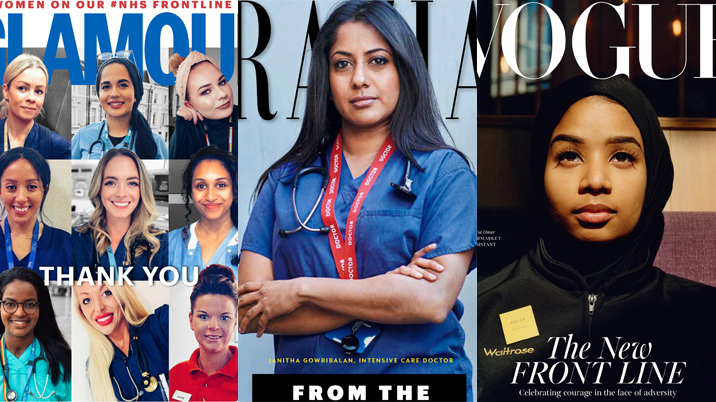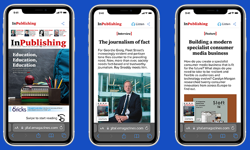
In the economy at large, adoption times for new digital technologies were compressed from years or months into weeks, with video conferencing being the obvious example. Consumer habits changed as shops and restaurants closed. Travel all but ceased.
What did this mean for magazines? What can we expect to return to? What’s changed for ever? Editors’ experiences varied widely depending on sector, subject, frequency and media channels, making it hard to generalise. But here, I’ve tried to pick out five important changes, taken from my own experience and what I hear from others. And they are generally all for the good.
Cover ideas don’t come so easily without the water cooler or the conference coffee break chat.
1. Readership
As copies threatened to pile up inside empty offices, some trade magazines - like this one and my own E&T monthly - invited readers to redirect copies to their home addresses. E&T has always had a high readership in the home and this rose further. Early in the first lockdown, there were reports of magazines receiving rising numbers of subscriptions too. Perhaps print magazines were a comforting relaxation away from screens.
Digital engagement was certainly up too. Website traffic rose dramatically for titles covering the pandemic. Angles for my own magazine ranged from face masks and video tech to ventilators and vaccines, which pushed our traffic to record highs in the late spring to summer. According to a survey by Eskenzi PR, 60% of the UK population have been reading more news since the start of the pandemic. Now we’ll see if that engagement sticks.
2. Remote working
We couldn’t get out but how much of a problem was that? Zoom interviews are not the same as face-to-face but they suffice. Art directors were making some convoluted arrangements for socially distanced cover shoots or just finding creative alternatives.
Editorial teams generally coped well. But how long will this last, as our stock of ideas from being out and about begins to run down? Investigations are harder to build without meeting contacts over a coffee. Cover ideas don’t come so easily without the water cooler or the conference coffee break chat.
Editors learnt we don’t need all our team in one place every day but a little of the office would help keep us sane and creative. But we do need to get out and about again among the audiences we serve.
3. Events
Events are vital to many magazines; some only exist to support them. 2020 proved it possible to run them virtually, perhaps not on the same scale as the real live thing in a venue but they are more than just a poor substitute and can even turn a similar profit. Event revenues were hit hard but expenditures were down too.
We ran our first E&T Innovation Awards in 2020 and, of course, they were virtual but they went well, giving us more confidence for 2021. We’d all like to get out once again, but if not, we can still put on a good show.
The shift to virtual events won’t be wholesale but it will be significant. Virtual events aren’t the same fun or offer quite the same networking but they are easier to get to, briefer, quicker to dress for, more accessible, more inclusive and more global. That’s proving very attractive for publishers.
4. New heroes?
The ‘people’s hero’ became a new kind of cover star in 2020. A high profile example was July’s Vogue, with three separate covers celebrating key workers: a train driver, a midwife and a supermarket worker.
Celebrities aren’t going away. Vogue returned to celebrities with Beyoncé, Kate Moss and Angelina Jolie. But they may yield a little to the remarkable ‘ordinary’ men and women, reflecting more diversity as well perhaps. Vogue was a high-profile example but this trend goes much wider and deeper.
While celebrity sells consumer magazines, other kinds of titles don’t rely on it in the same way. We still need our interviews of course but we’re doing more than before with those professionals who aren’t necessarily famous, rich or top of the career ladder – but come with a worthwhile passion and an interesting story. To mark the 150th anniversary of the institution we serve, we’re pulling together a list of the greatest members past and present. The latter will look quite different to how it would have looked ten years ago.
5. Diversity?
Magazines are at last waking up to this issue which has long been obvious if you glance around an editorial office and even more so if you hear the accents.
I’ve heard consumer magazine editors talk proudly of the high proportion of women in their workforce which may be true. But the sector as a whole might not look quite so good without women’s magazines skewing the figures. It doesn’t look so good at senior levels either. And it doesn’t look so good in the trade and business titles – although the media is often better than the industries it covers.
Magazines seem to have a lot further to go when it comes to race, class and even people outside the South. But there is at least a growing realisation that it’s a problem – for editorial balance and good business as well as equality and fairness. The PPA, which runs a survey every few years, believes there has been progress in attracting more diverse talent but the challenge now will be retaining and cultivating that.
As in just about every industry, surviving 2020 accelerated the rate of change in publishing. In 2021, we’ll begin to see which changes are for good.
The shift to virtual events won’t be wholesale but it will be significant.
This article was first published in InPublishing magazine. If you would like to be added to the free mailing list, please register here.










